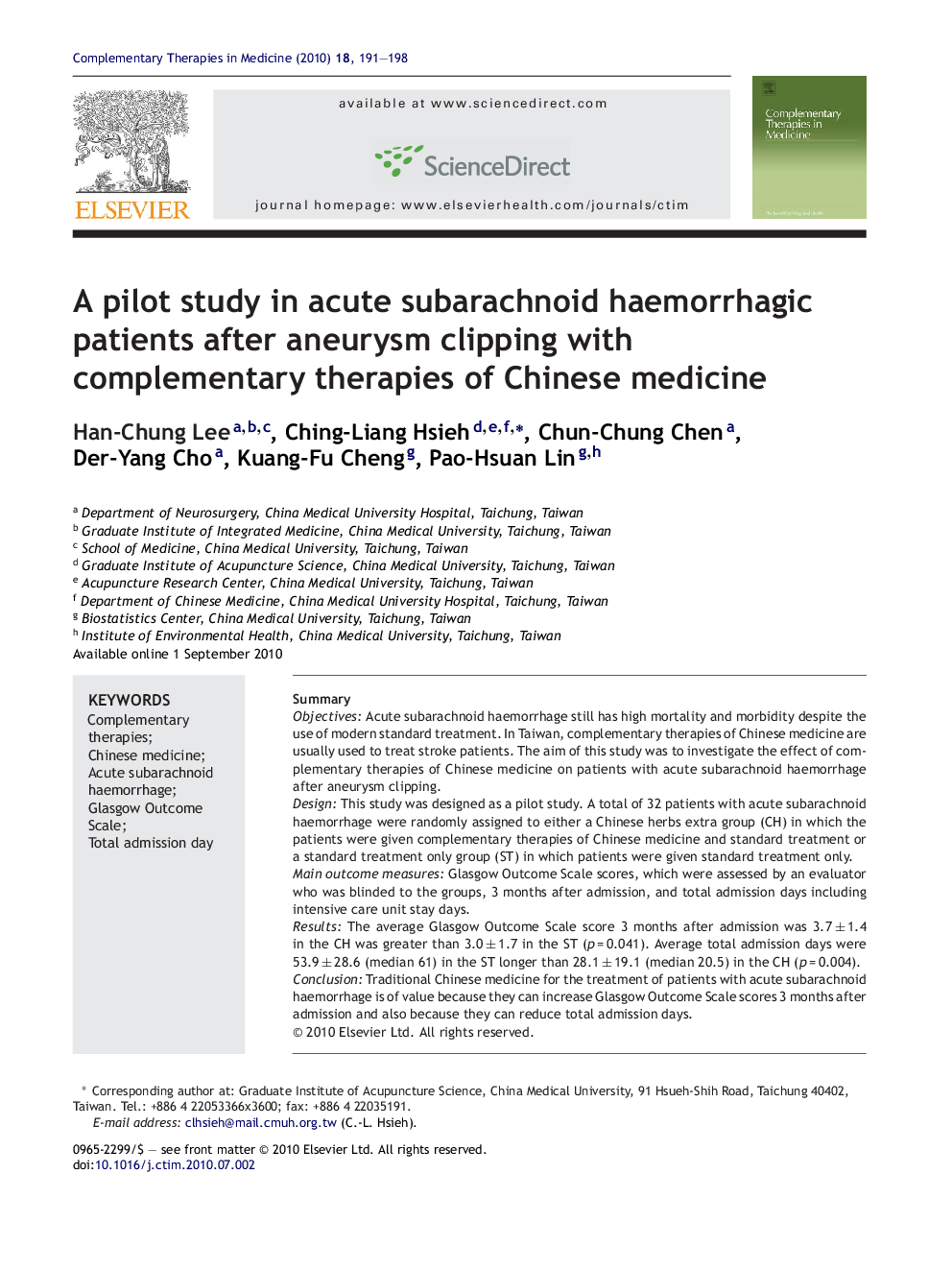| Article ID | Journal | Published Year | Pages | File Type |
|---|---|---|---|---|
| 2629168 | Complementary Therapies in Medicine | 2010 | 8 Pages |
SummaryObjectivesAcute subarachnoid haemorrhage still has high mortality and morbidity despite the use of modern standard treatment. In Taiwan, complementary therapies of Chinese medicine are usually used to treat stroke patients. The aim of this study was to investigate the effect of complementary therapies of Chinese medicine on patients with acute subarachnoid haemorrhage after aneurysm clipping.DesignThis study was designed as a pilot study. A total of 32 patients with acute subarachnoid haemorrhage were randomly assigned to either a Chinese herbs extra group (CH) in which the patients were given complementary therapies of Chinese medicine and standard treatment or a standard treatment only group (ST) in which patients were given standard treatment only.Main outcome measuresGlasgow Outcome Scale scores, which were assessed by an evaluator who was blinded to the groups, 3 months after admission, and total admission days including intensive care unit stay days.ResultsThe average Glasgow Outcome Scale score 3 months after admission was 3.7 ± 1.4 in the CH was greater than 3.0 ± 1.7 in the ST (p = 0.041). Average total admission days were 53.9 ± 28.6 (median 61) in the ST longer than 28.1 ± 19.1 (median 20.5) in the CH (p = 0.004).ConclusionTraditional Chinese medicine for the treatment of patients with acute subarachnoid haemorrhage is of value because they can increase Glasgow Outcome Scale scores 3 months after admission and also because they can reduce total admission days.
